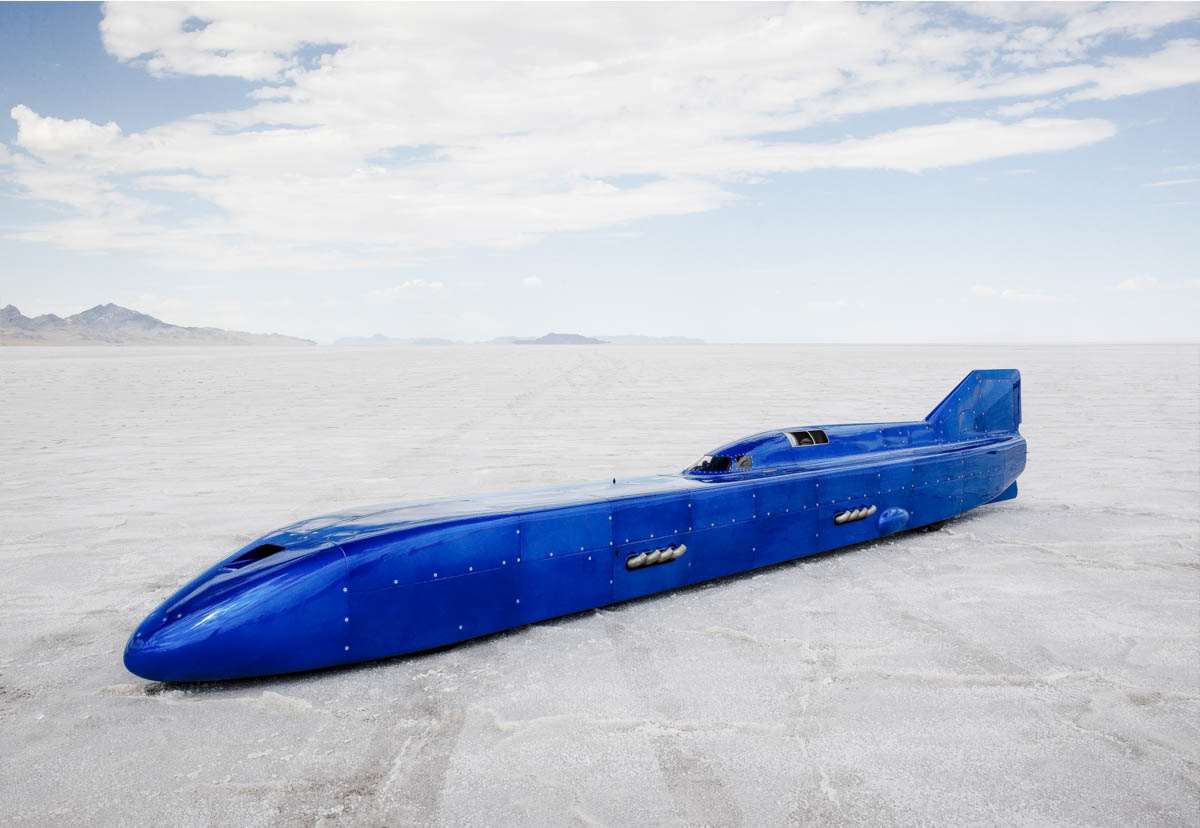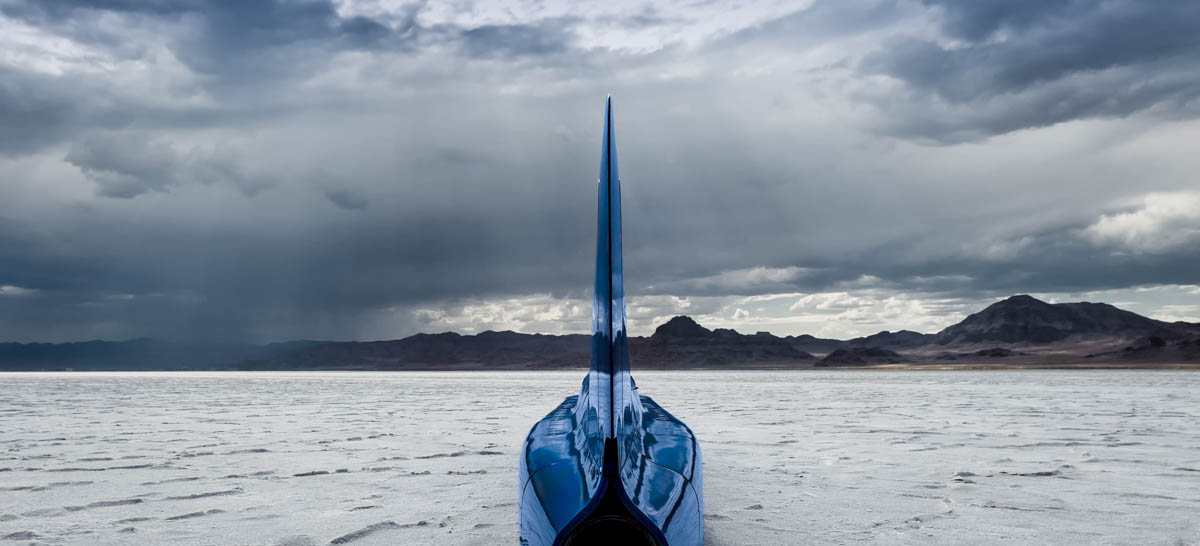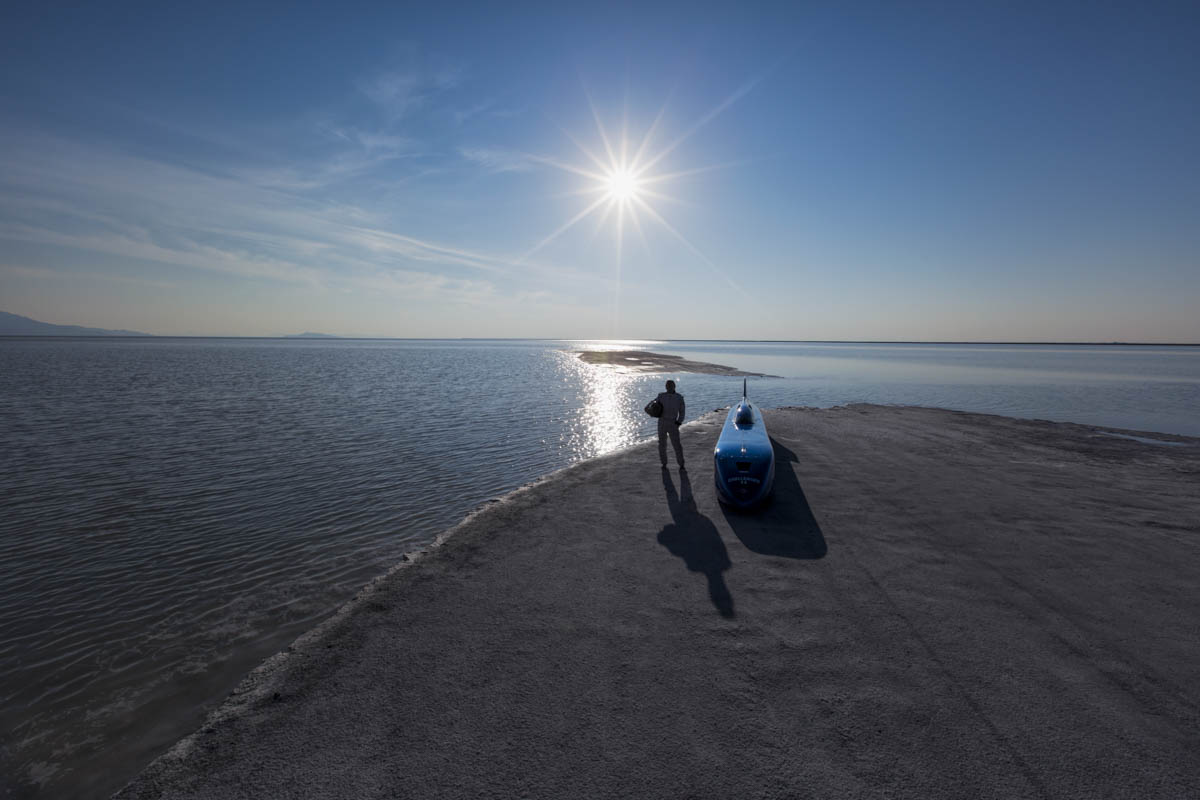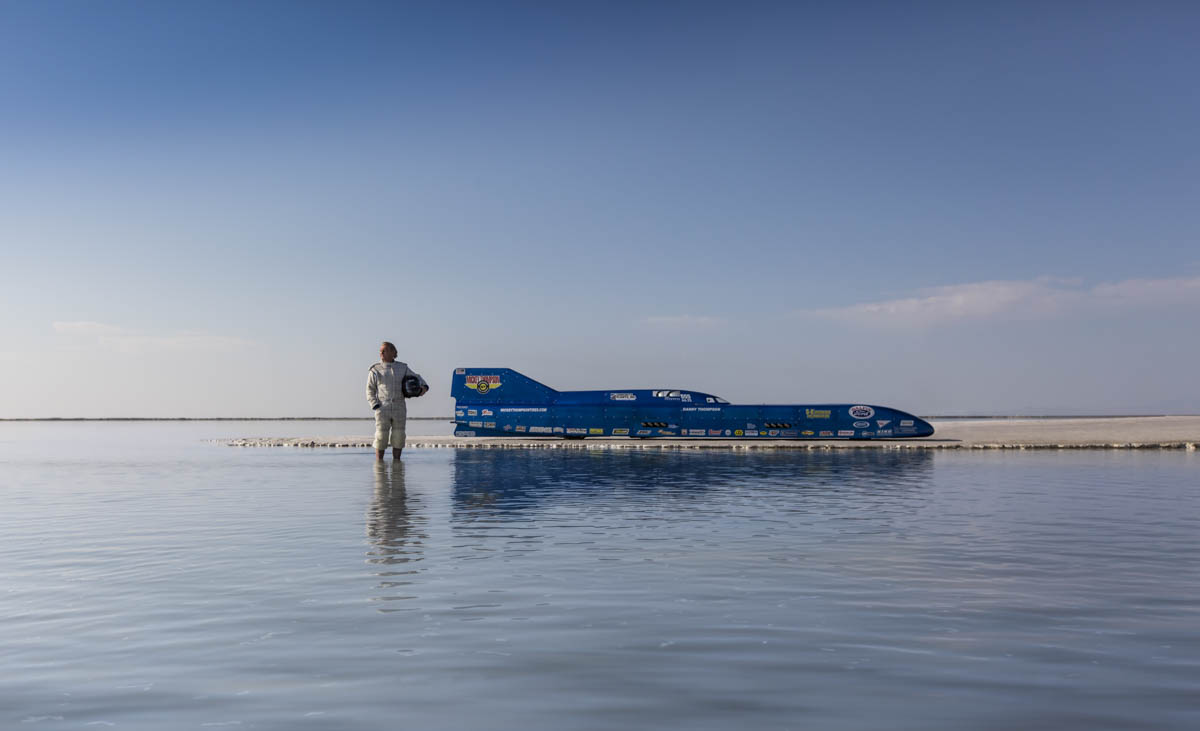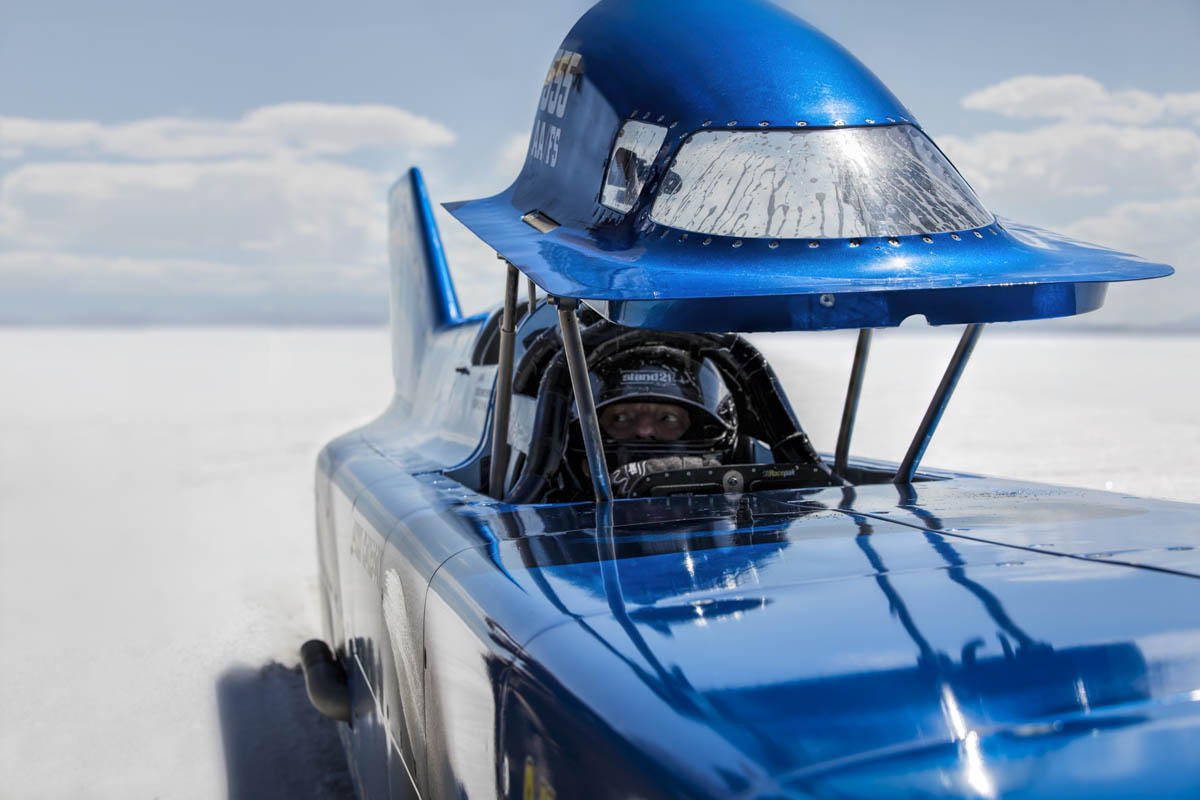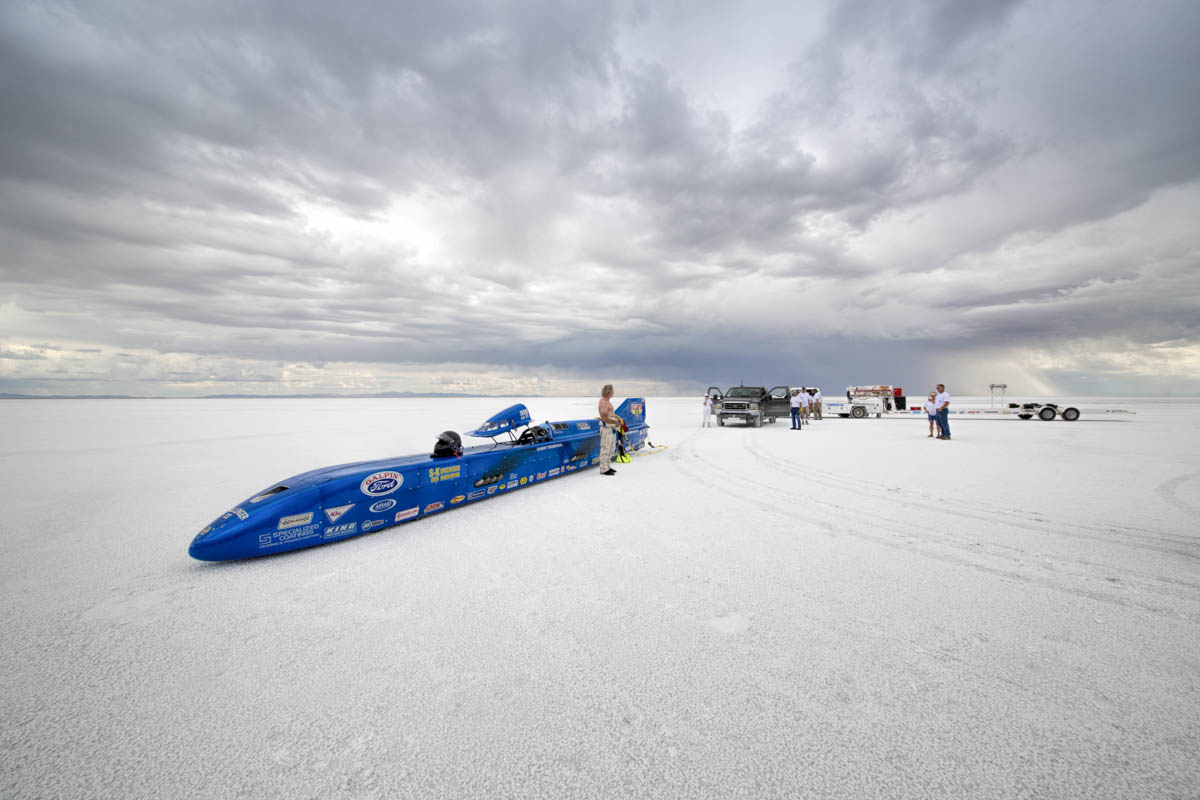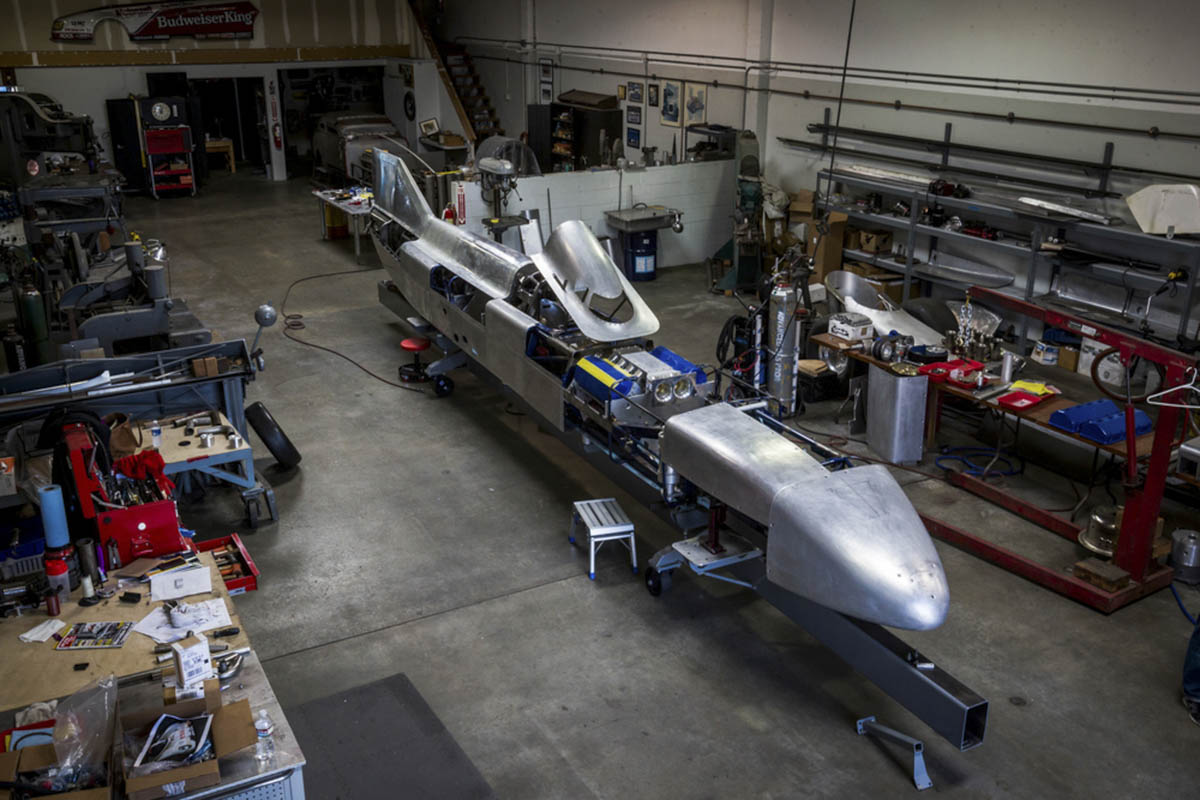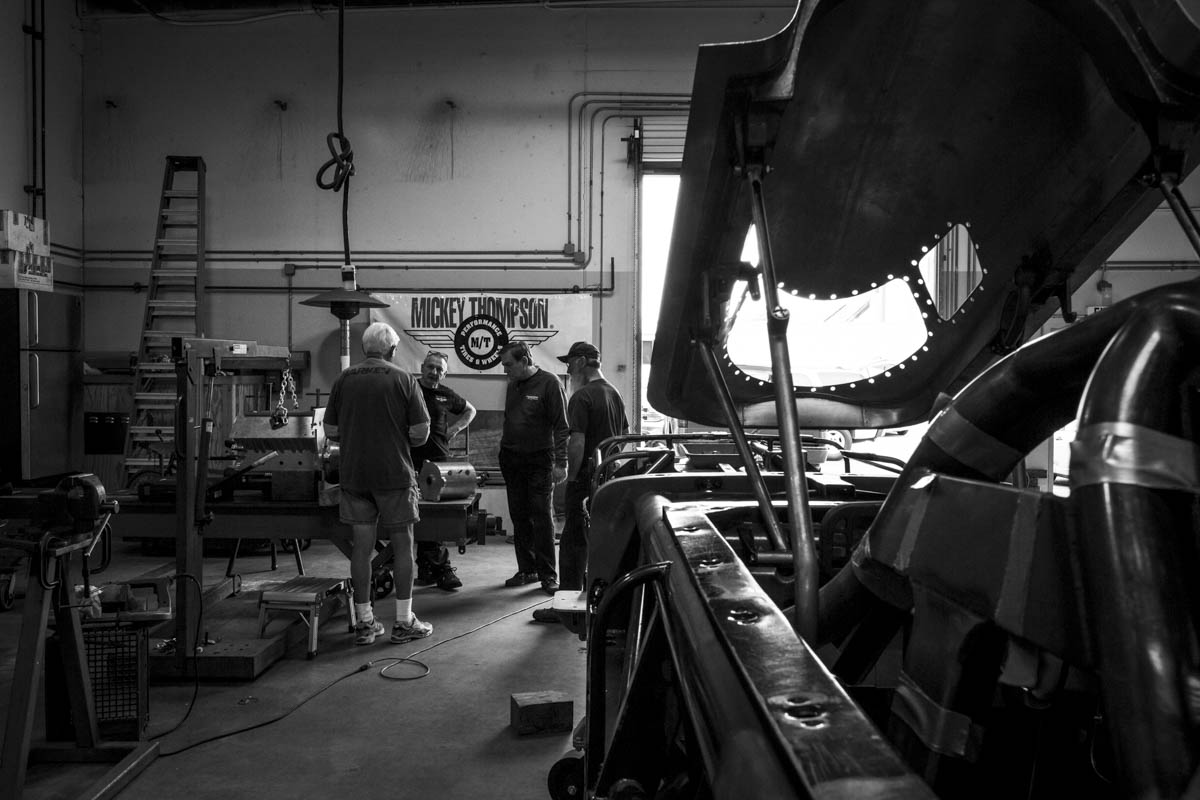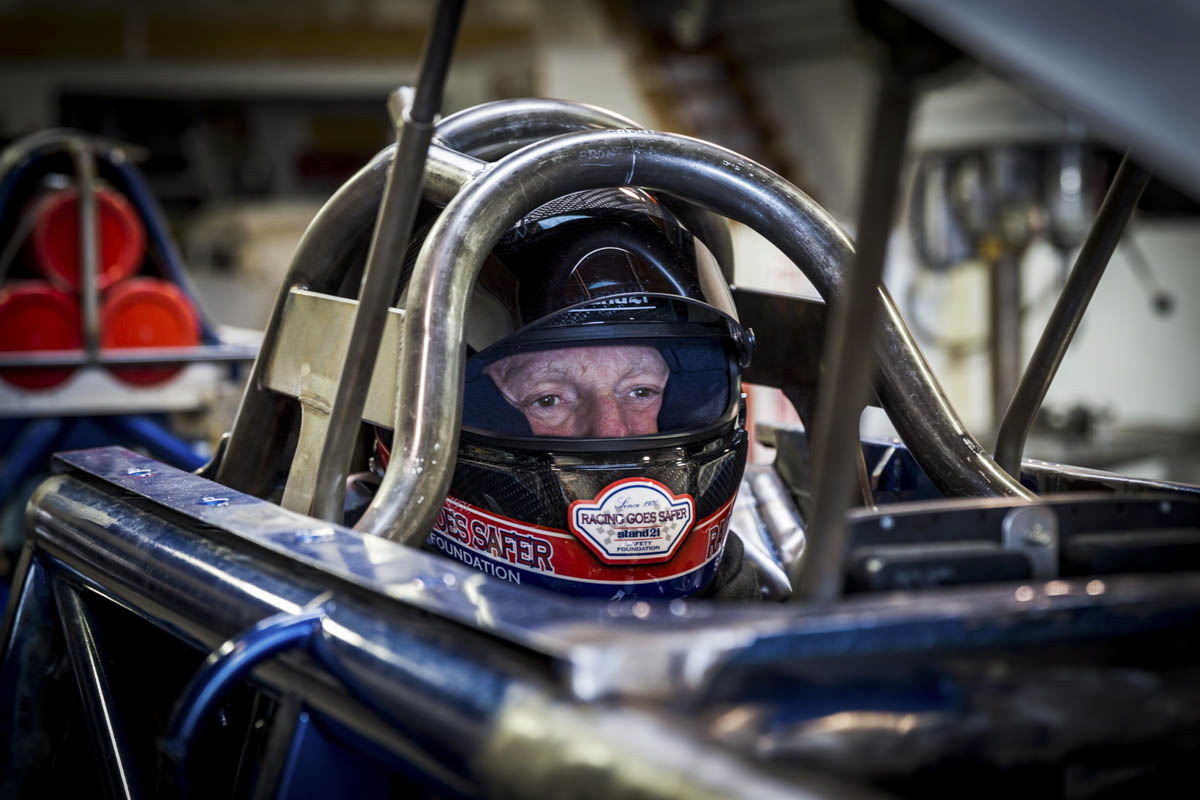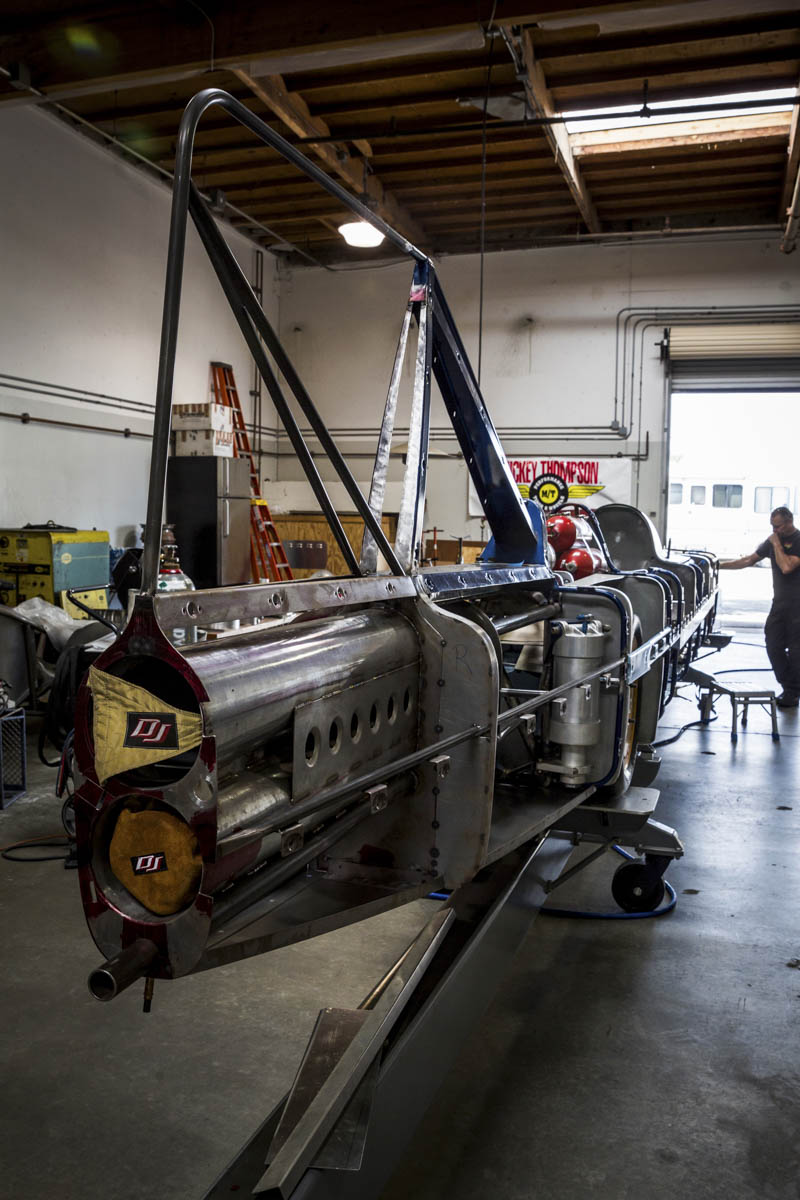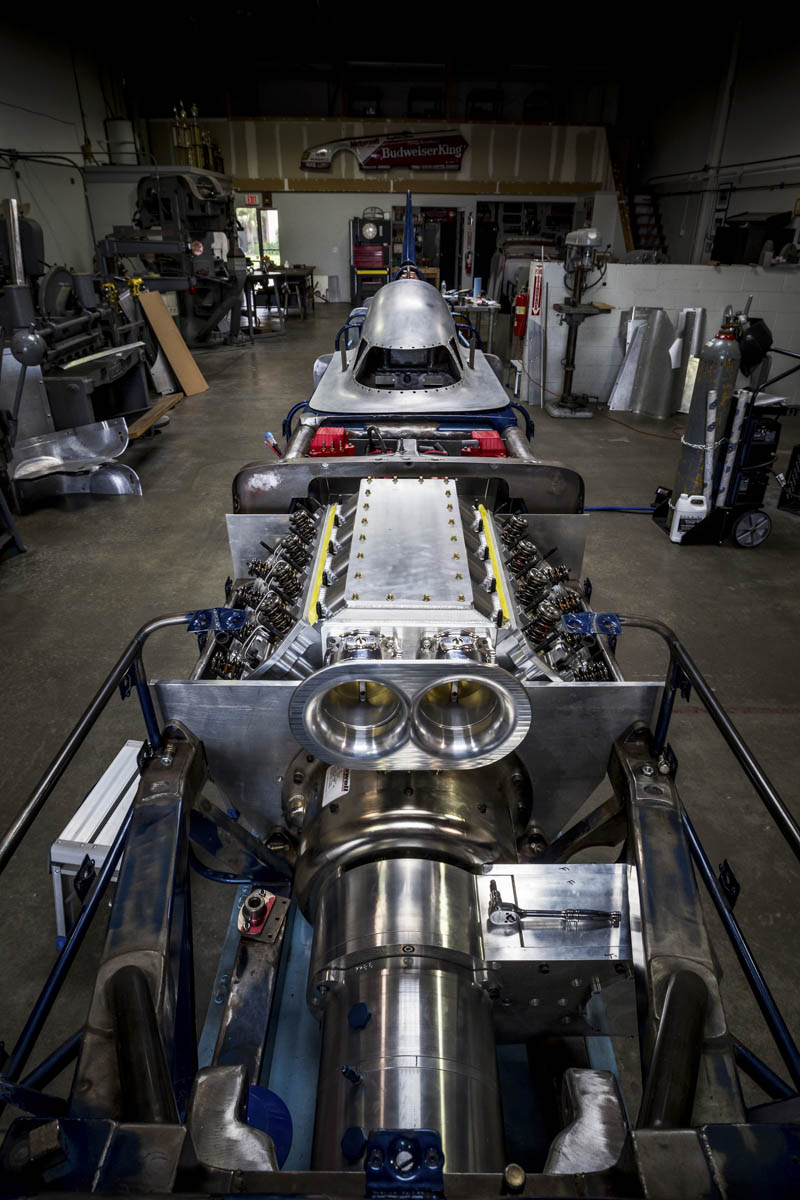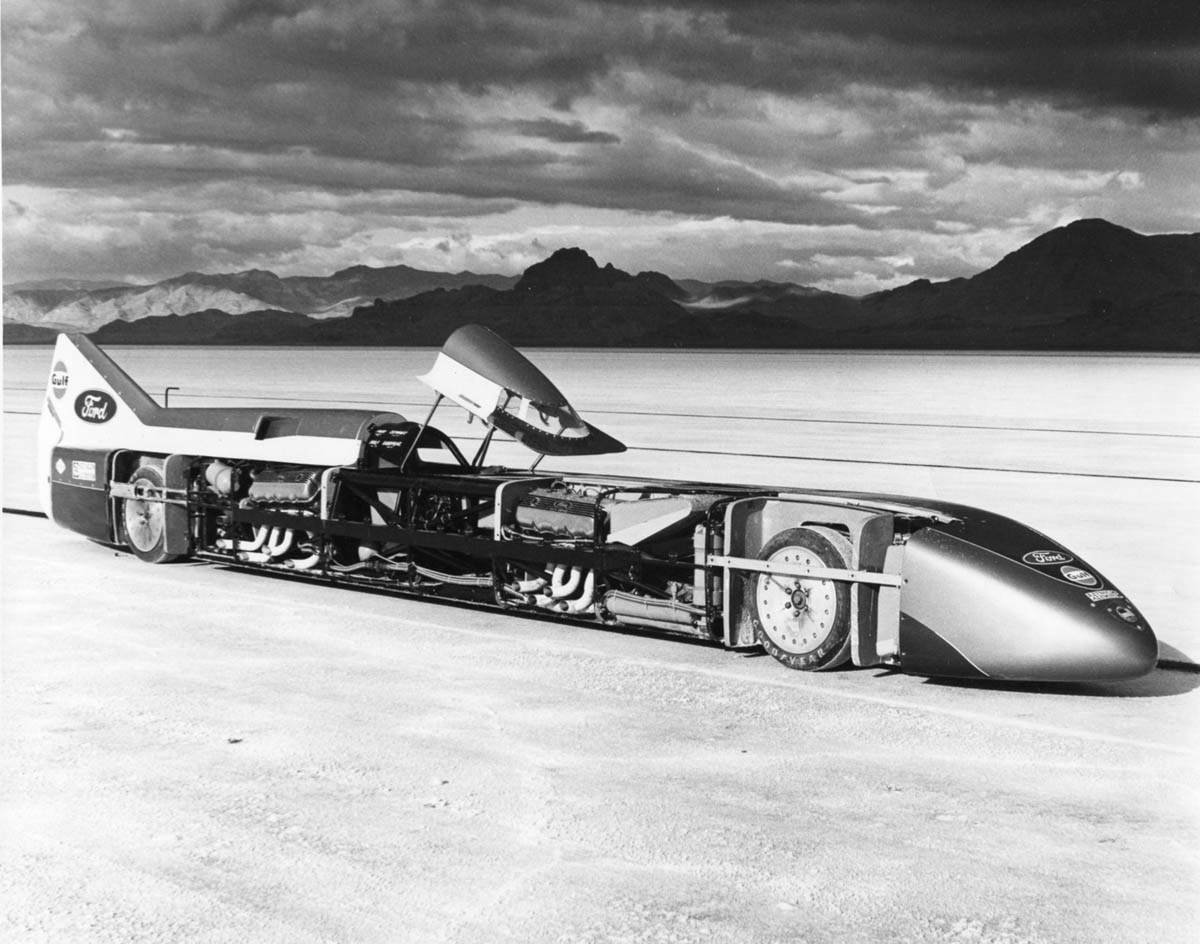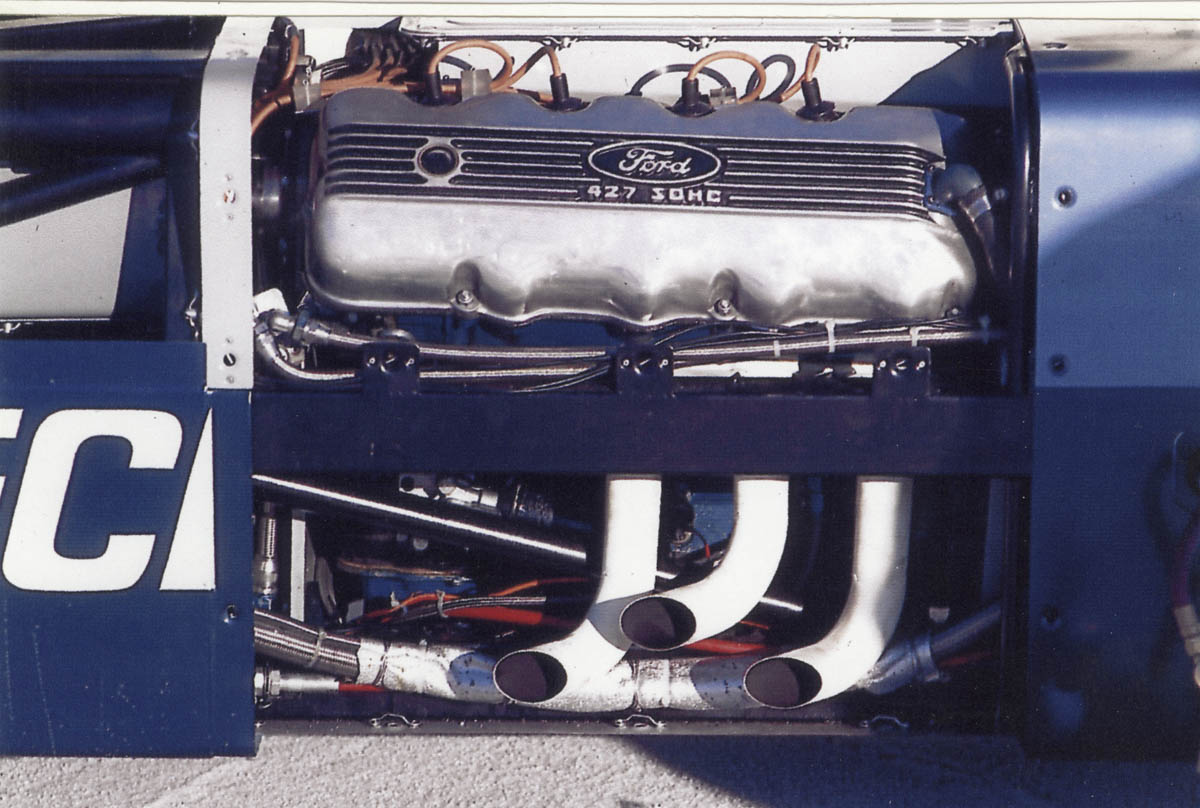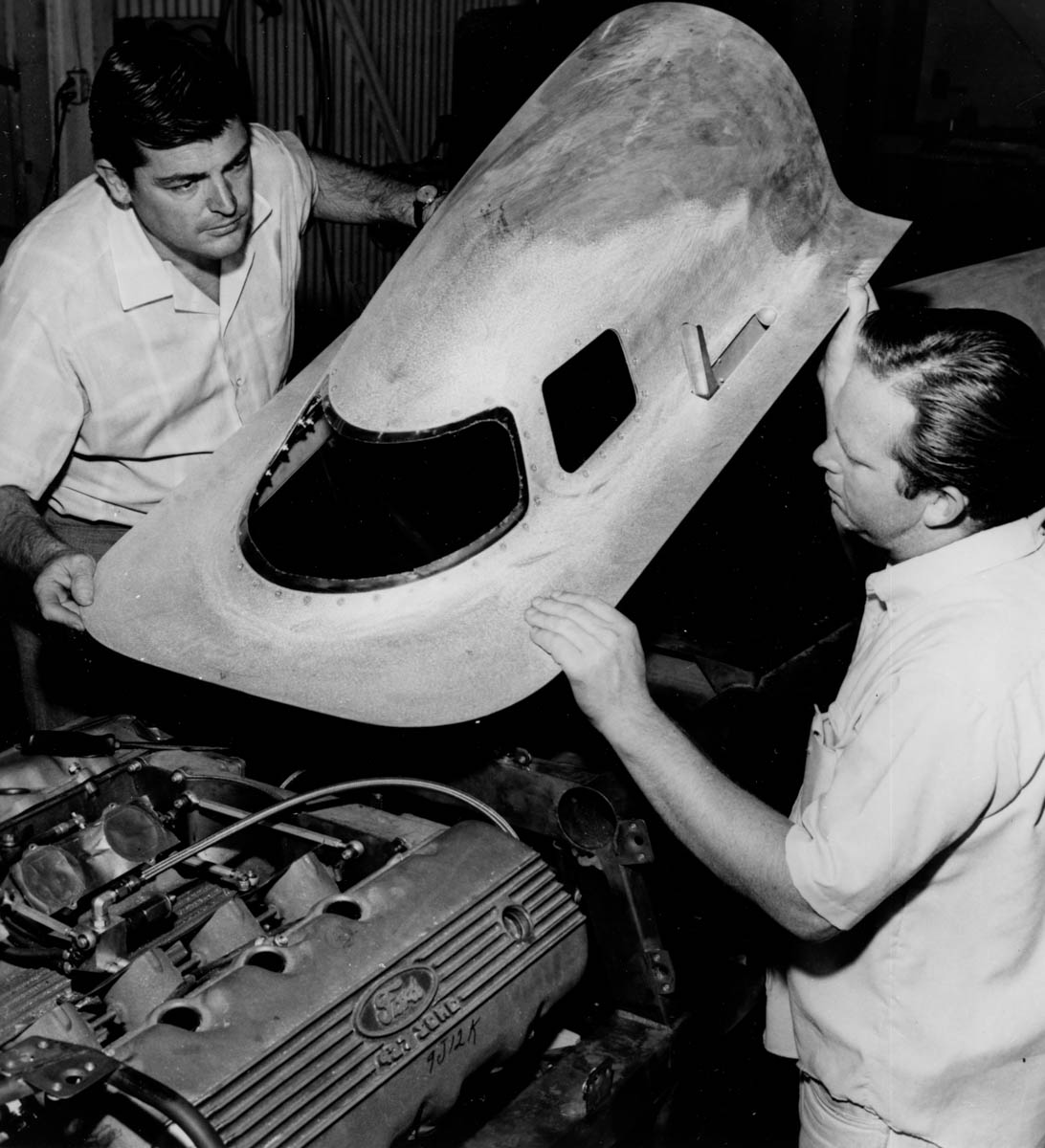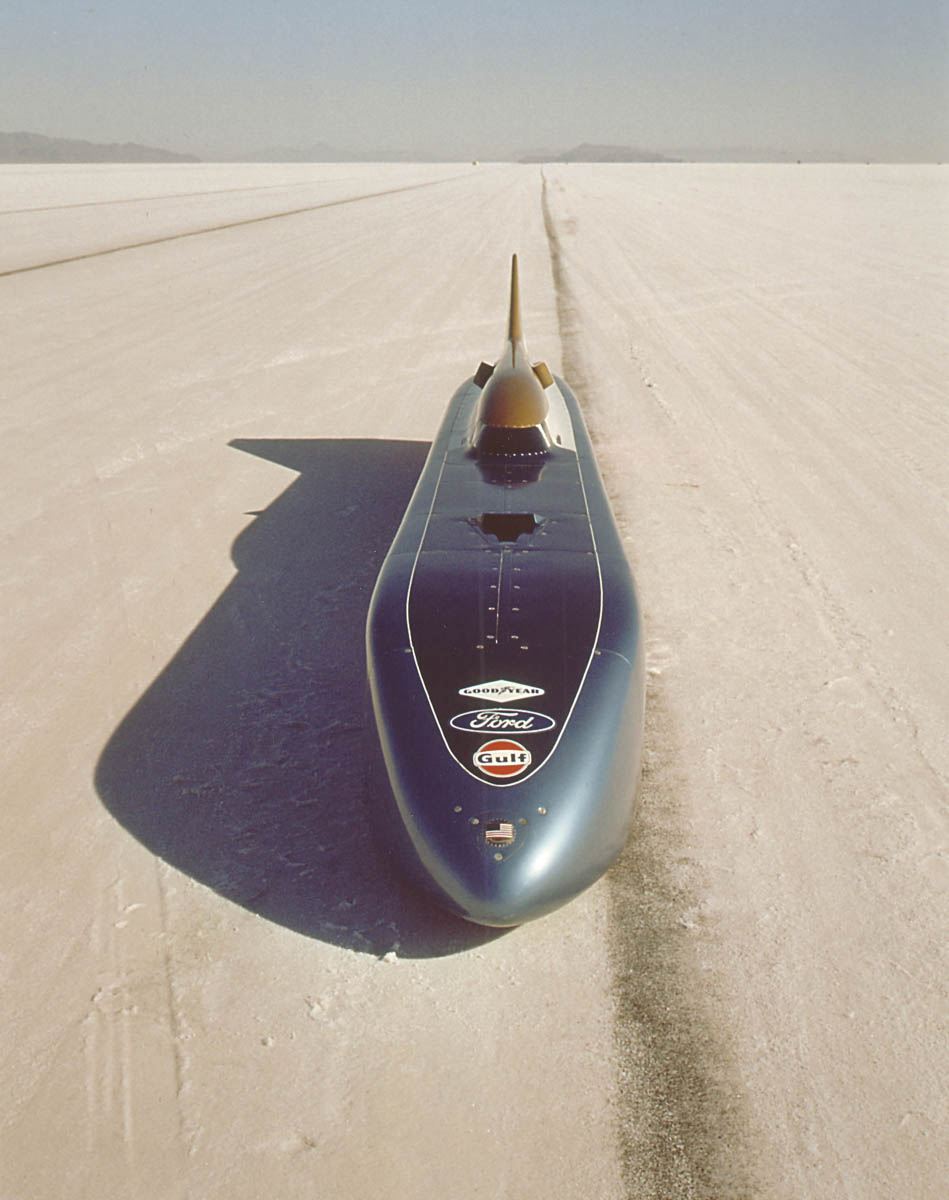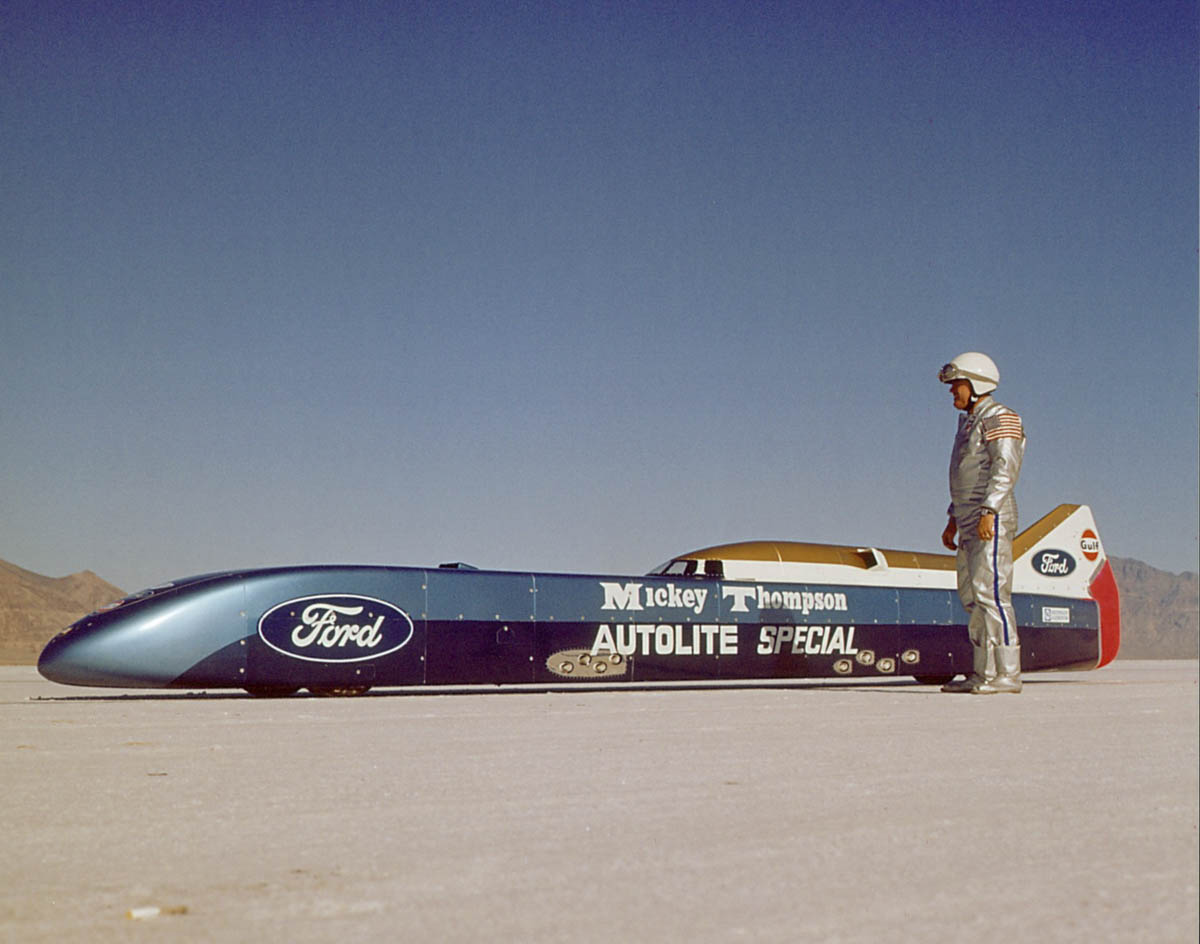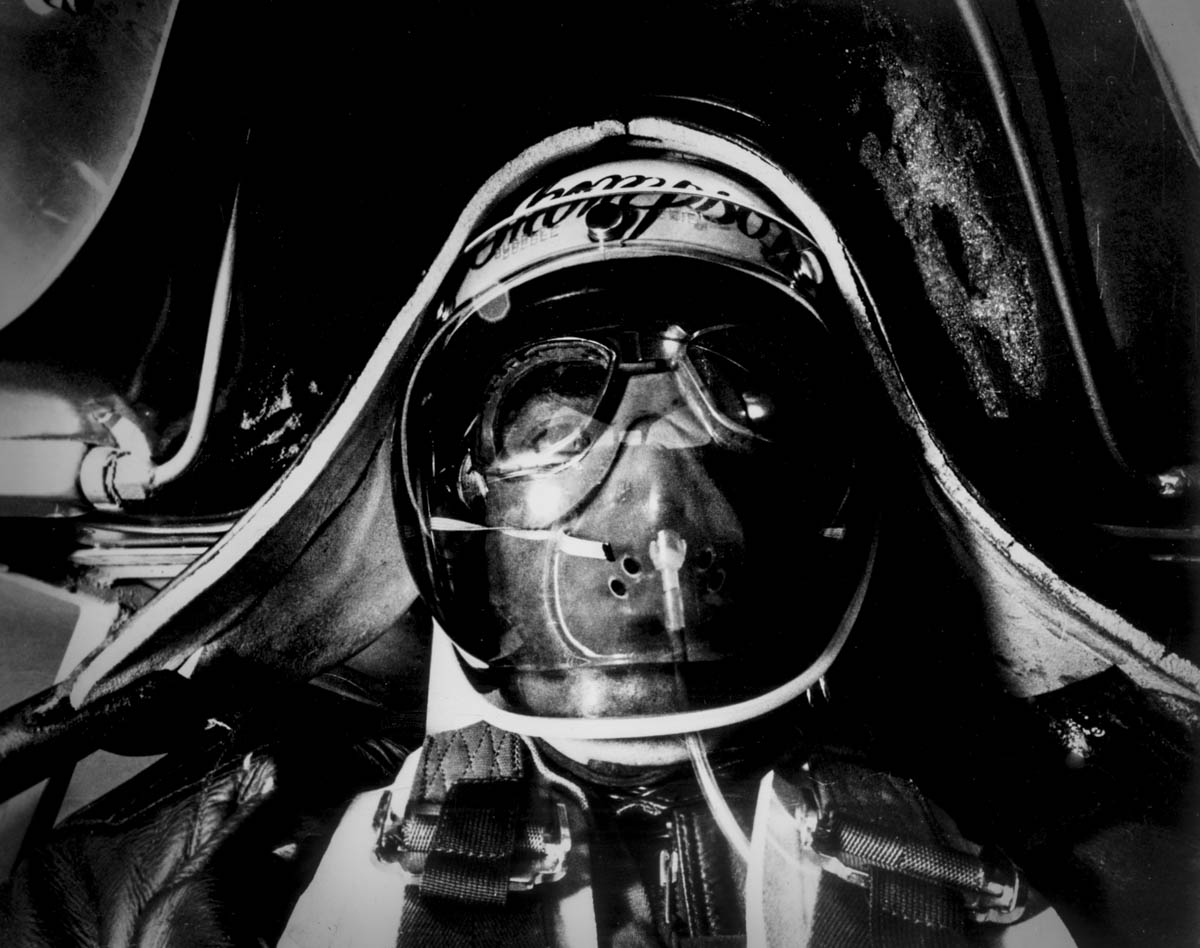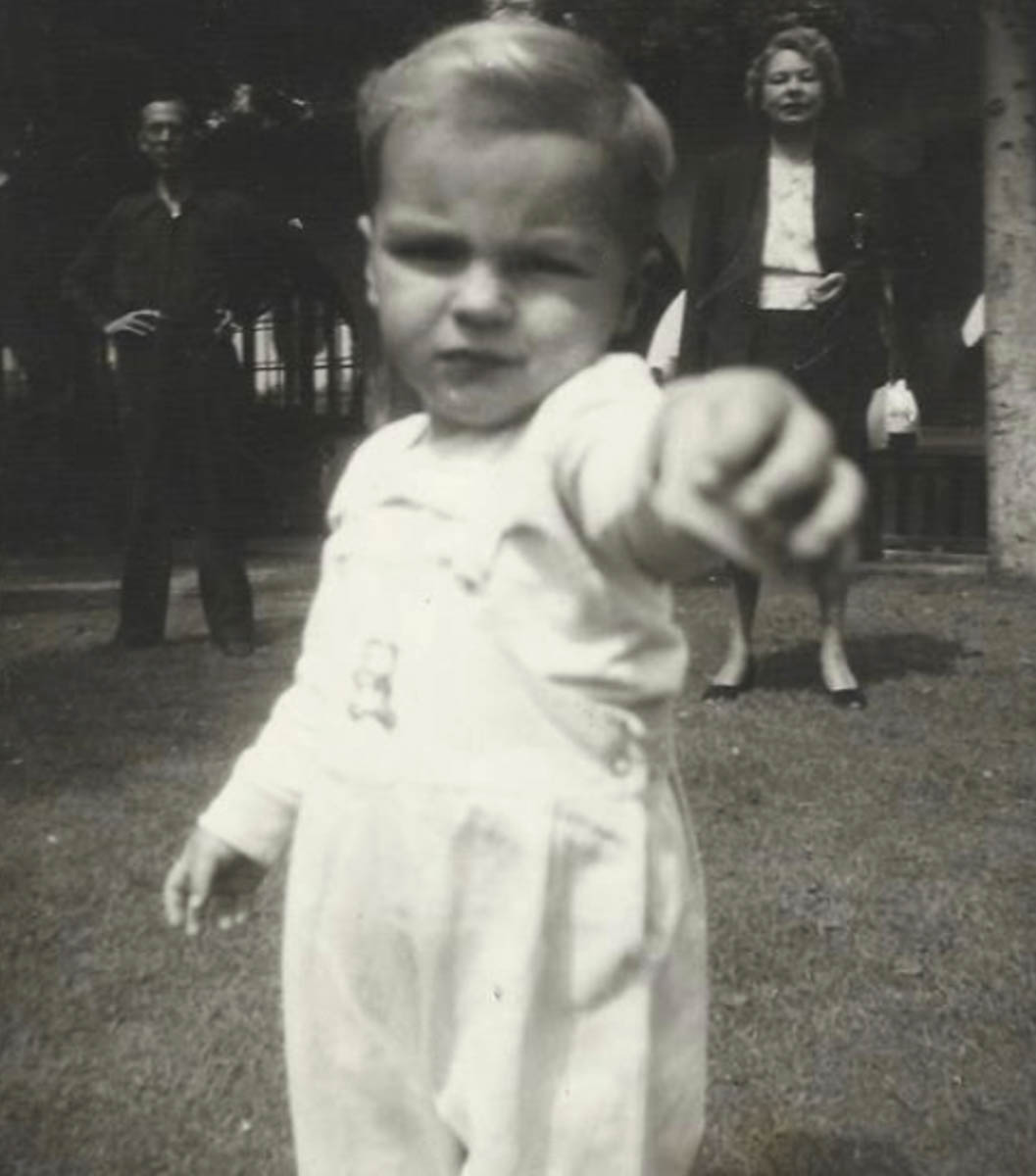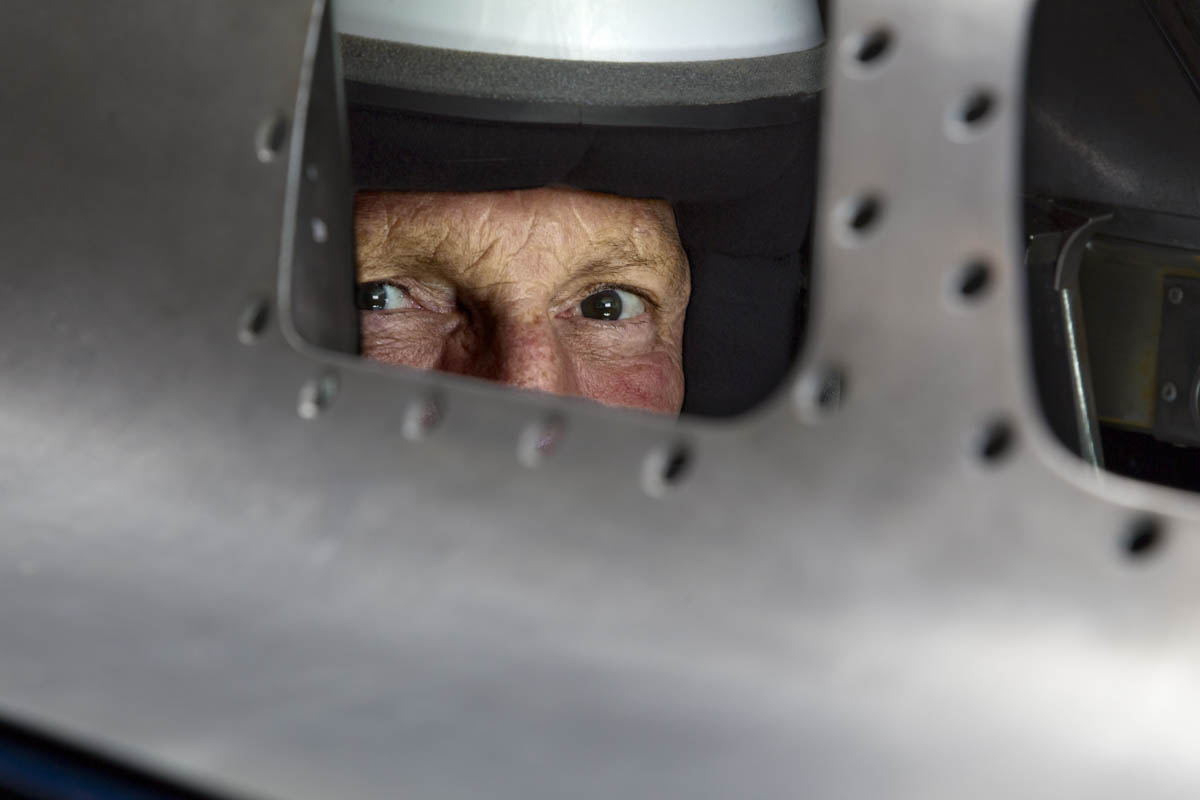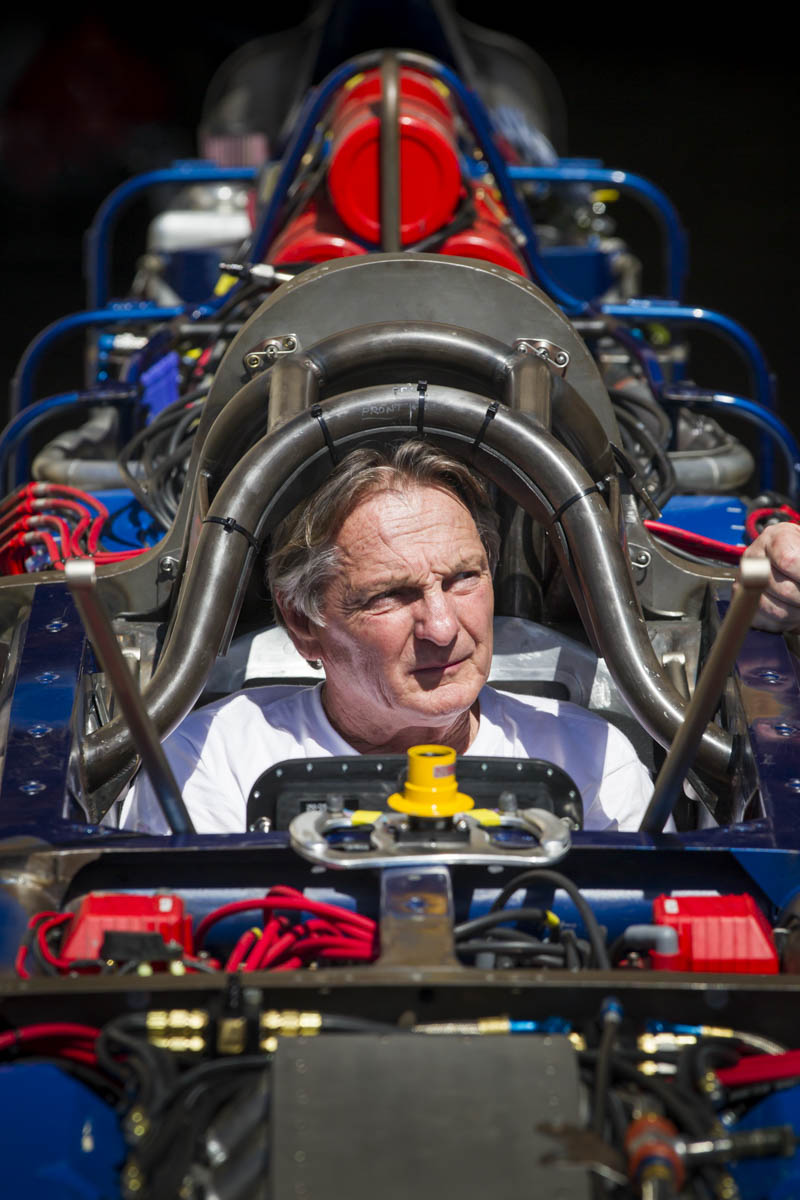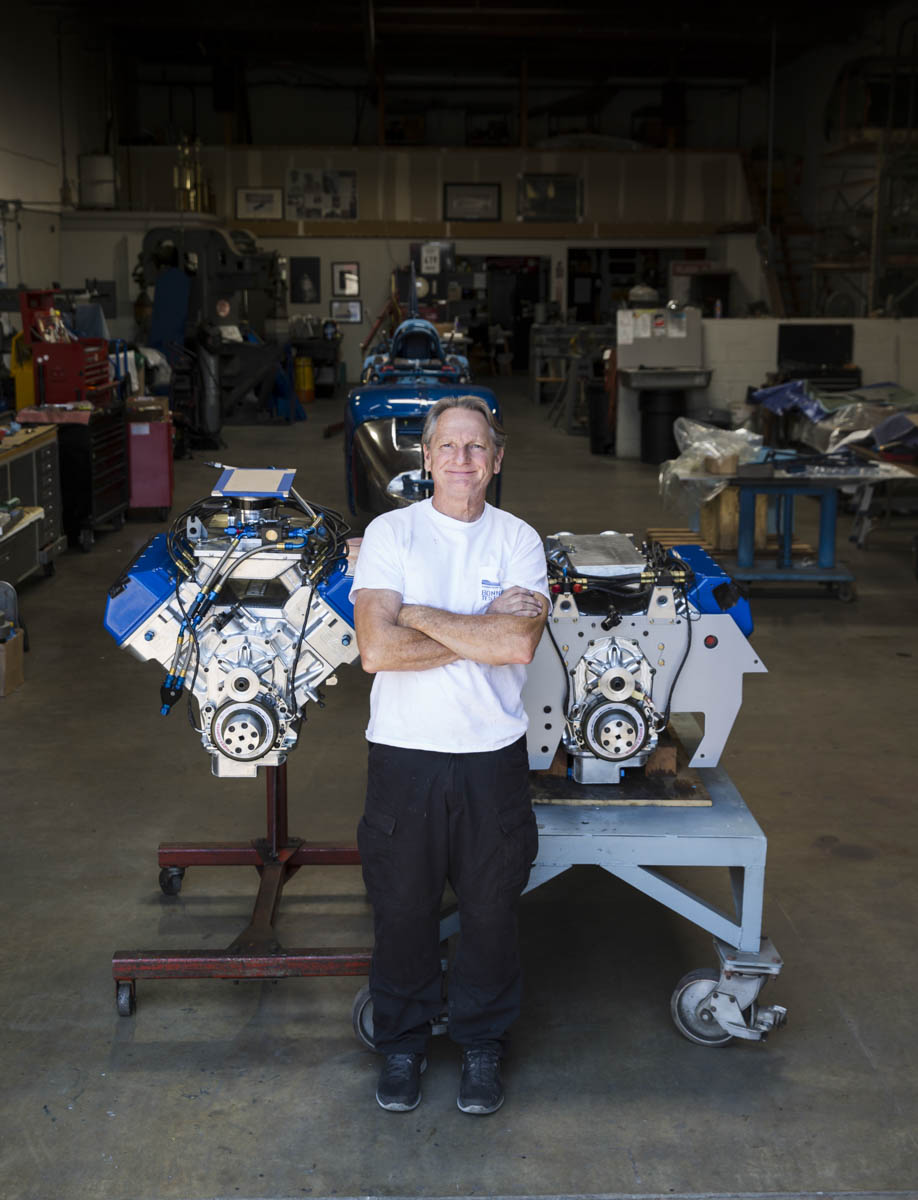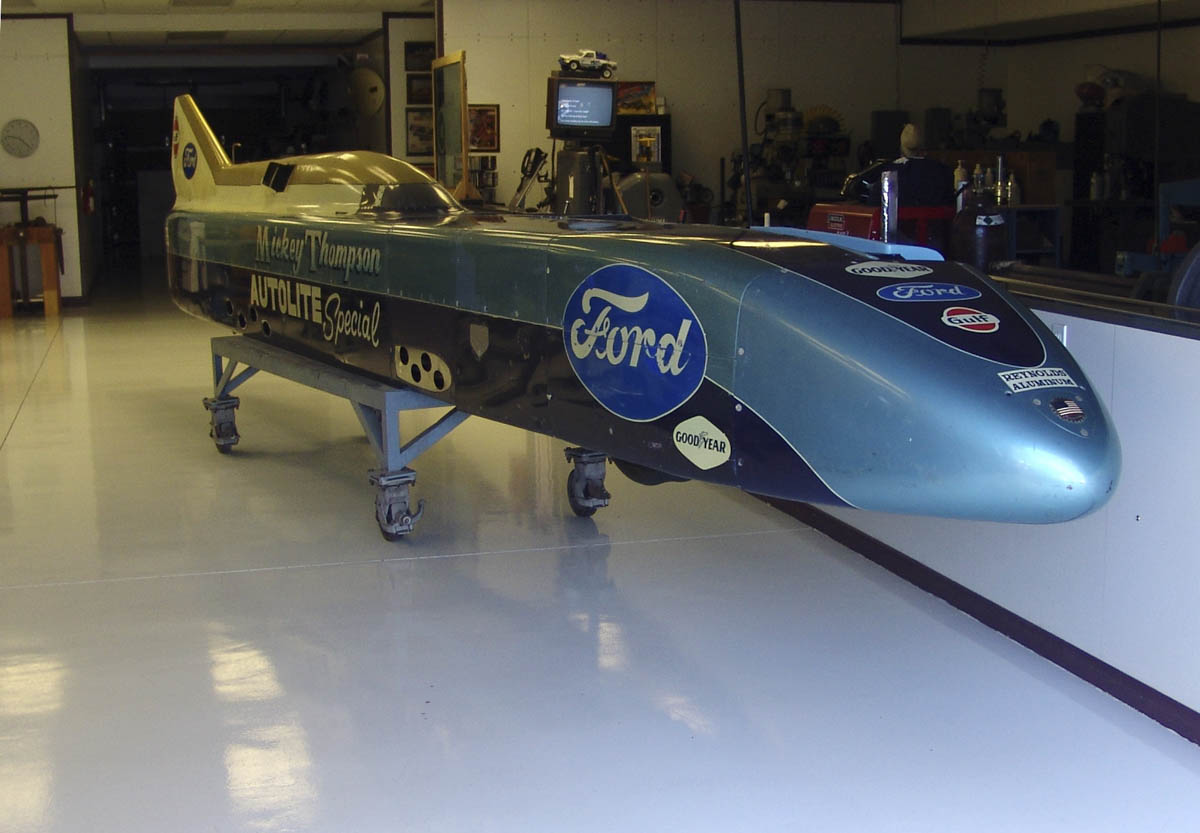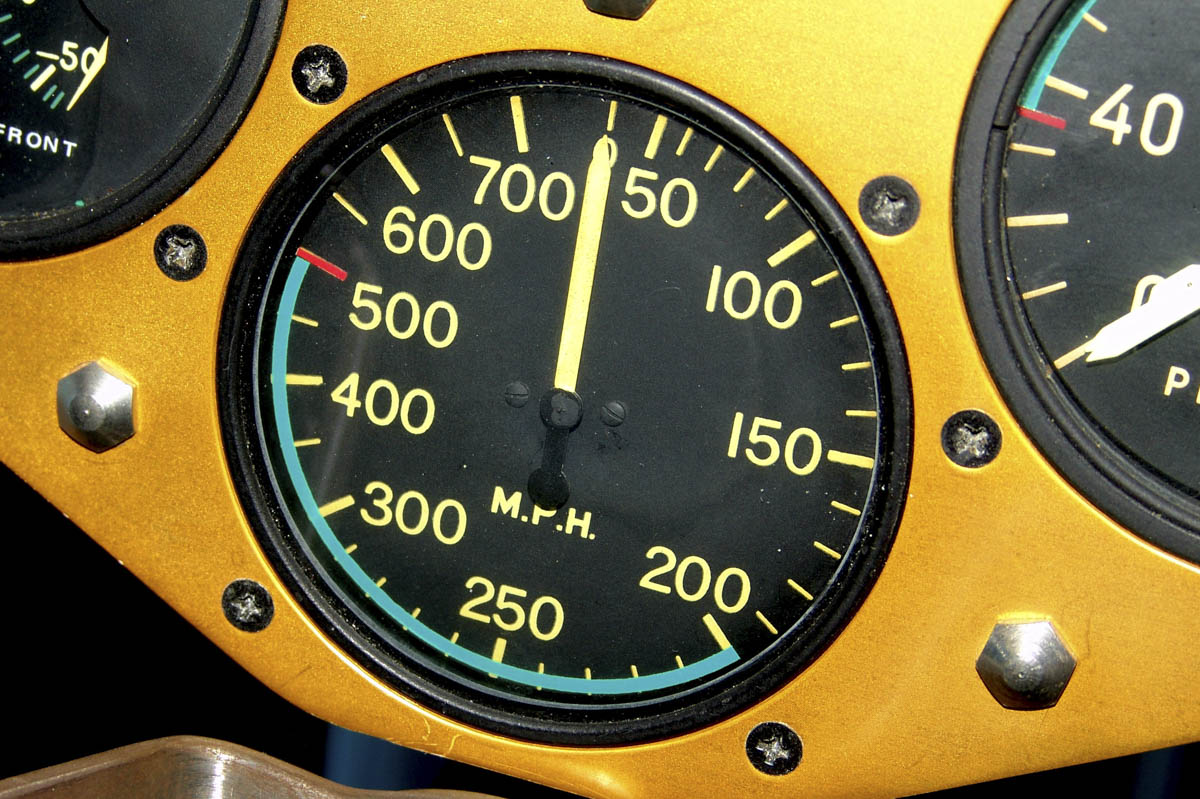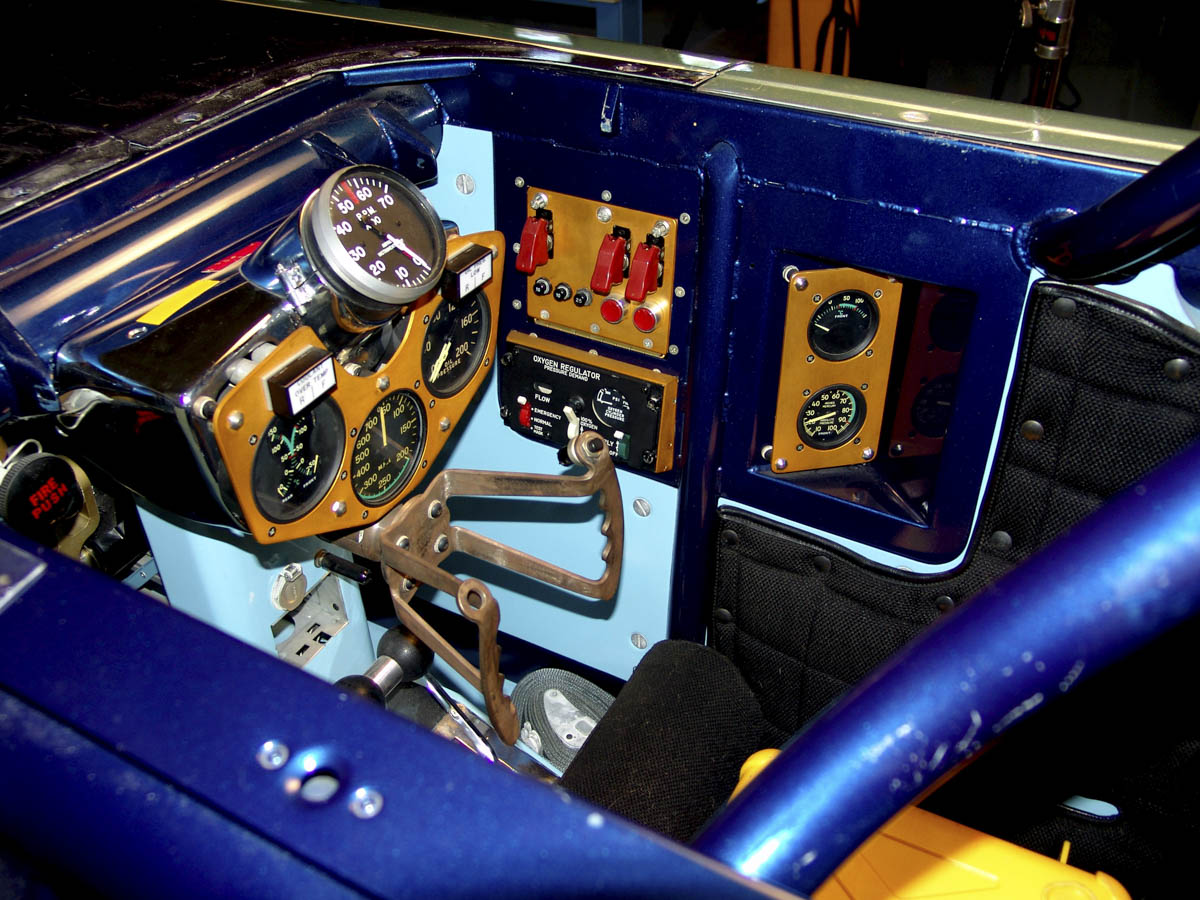Danny Thompson

50+ years in the making, it is a story of obsession, glory,
achievement and tragedy. And it’s about family.
Thompson Archive
Thompson Archive
Thompson Archive
Thompson Archive
The Bonneville Salt Flats have been calling out a challenge to
hotrodders since the 1920’s. This otherworldly landscape is the
place to test machinery, ingenuity and it’s the place to test
yourself. That call crossed continents and oceans. In the 1930’s
the British made several all-out efforts to break the 400mph
barrier, using huge amounts of money, massive 12cyl. airplane
engines and the best engineers available, mostly culled from the
aviation industry. None could break the magic number, though
after the war speed legend John Cobb came painfully close with a
394.196mph run in 1947. This record held for years.
A Southern California hotrodder named Mickey Thompson
considered this a personal insult. MT kept a frantic schedule
throughout the 1950’s, competing and innovating in drag racing,
road racing and speed trials. He held numerous records and
became one of the top builder/drivers. He also had the gift of
promotion and was able to attract sponsorship of various types at
a time when that was a rare luxury. As the ‘50s closed in on the
‘60s, MT came up with what would be his biggest challenge yetto
go for the outright land speed record and break the 400mph
barrier. And he would do it like the home garage hotrodder that he
was. With ace engine builder, fabricator and partner-in-crime Fritz
Voigt at his side, the two rodders opened a couple of beers and
chalked out the basic car architecture on the floor of MT’s
garage. Four Pontiac V8’s. All-wheel drive. A wide and low
streamliner and a complicated transfer system to get all four
motors synched up and power to the ground.
Thompson Archive
Thompson Archive
Thompson Archive
MT put together a crew of self-taught builders and the plan took
shape. Working nights after work and weekends, the Challenger I
rose from the garage floor. Finished in beautiful hand-pounded
body panels, the blue streamliner was ready for the Bonneville
salt for the 1959 speed week. Tires were always a weak
component for land speed cars and MT had convinced Goodyear
to come up with special rubber to withstand the extreme forces.
MT had become obsessed with taking the record away from the
British. When the stunning Challenger I hit the salt, it proved very
fast, faster than any home- built hot rod ever, managing a
blistering two-way average of 330.51. Mickey Thompson was the
fastest American driver, ever, but Cobb’s record eluded him.
Bolting superchargers onto all four Pontiacs seemed like the
formula to put the car past the magic number. Returning in 1960,
Thompson pushed the improved and more brutal Challenger I to a
one-way pass of 406.6 mph. Suffering a breakage on the return
pass, the record couldn’t be certified as official, but MT had
proven the capabilities of himself and his team.
Thompson Archive
Thompson Archive
Thompson Archive
Thompson Archive
Thompson Archive
Business and multiple racing teams, including an ongoing Indy
500 effort pushed the LSR record onto the backburner, but the
obsession was never far off. Exotic jet and rocket cars had gone
way past 400 but that didn’t matter to MT; those weren’t real hot
rods. The wheel-driven piston record was the only one that
mattered. In ’68 MT returned with a new, more refined streamliner,
christened Challenger 2. Two ferocious SOHC Ford 427s would
power the car past 400 mph, hopefully WAY past that mark. Ford
and Autolite came up with the big money needed and MT the
promoter made sure that everyone knew that he was going back
to Bonneville to hit home just who was the king of the salt. Early
testing approached 400mph and proved that the Challenger 2 had
what it took to shatter the record. All systems were go and the
obsession was buzzing when Mother Nature stepped in and
swamped the salt flats with water. Bonneville was a lake and the
attempt was over before it started. A few months later the
sponsorship was pulled and Challenger 2 was rolled to the back
of the shop and covered with a tarp while Mickey shifted focus to
drag racing and the exploding desert racing scene.
It is always tough being the son of a famous person and things
weren’t easy for Danny Thompson. Wanting to race from an early
age, he ran into a wall named Mickey. MT didn’t want his son
driving. Over the years he had lost friends and drivers to crashes
and they all hung heavy on his conscience. Danny continued to
compete without help from his famous father and met success in
cars and on motorcycles. He was a natural. The hardheaded,
competitive father had produced a hardheaded, competitive son.
MT and DT would eventually make peace and even drive together
through numerous desert races.
The Bonneville itch never went away. MT had always thought that
Challenger 2 was the fastest piston-powered car ever built. His
businesses were thriving and he was a rich man. The means
were available. In 1987, Mickey approached Danny with a
proposition. Let’s get Challenger 2 back to Bonneville and I want
you to drive it. The father-son relationship was finally back on
track.A couple of months later, Mickey Thompson was murdered
in the driveway of his house. But that’s a story for another day.
Flash forward to 2006 and I am at the Danny Thompson
compound in Colorado working on a documentary film about MT.
DT was in his mid-50’s and extremely fit. He was friendly and
helpful but it was obvious that he was not a guy to mess with. He
had an energy. There was a fire burning inside him. We spent a
few days filming and following Danny around his large workshop
where, since retiring from racing in 1995 he’s been expertly
restoring historic racecars. A Dan Gurney-driven Indy car is up on
a table, stripped to a bare chassis. Too big to stash away,
Challenger 2 is on rollers in the center of the shop. I recognize it
immediately from photos in magazines. The SOHC Fords are
gone, but it is in great shape otherwise. Between filming I ask
about the car. He studies the car, as he must have a thousand
times before. He mentions how much he would like to restore it
and take it out to Bonneville to finish what his father had started.
He had recently earned his red 200mph hat on the salt and land
speed racing was on his mind in a way that it hadn’t been while
he was racing professionally. His desire to proceed with
Challenger 2 was tempered with the enormous sums of cash that
would be involved. It seemed at the time to be a wall that was
insurmountable. To hear him talk, it was clear that the Thompson
LSR effort was unfinished business and he wanted to get the car
once again through the speed traps as much for his Dad as for
himself.
After a few days at the compound, we traveled with DT to Speed
Week for more filming and he graciously acted as our escort
around the salt. The Thompson name has always held a lot of
weight at Bonneville and Danny made sure that every courtesy
was extended to our crew by the organizers. Though extremely
busy with the normal chaos of filming, the appeal of Speed Week
infected us all. On the long ride back to L.A., I found myself
hoping that Danny would somehow be able to scrape up the
money and backing to finish what his father had started.
August 2016- after two years of bad salt conditions, Danny
Thompson is set to make a statement for the ages about
persistence, dedication and focus. There is a tremendous amount
of interest in the Thompson journey and the LSR obsession that
carries the son as it did the father. A long, difficult process has
brought DT to this point in history. The Challenger 2 is back,
powered by two 2500hp Hemis running on nitro. The drive is
through two three-speed gearboxes, linked and counterbalanced
a huge improvement over the original hot-rodder “split gas pedal
and Mickey’s intuition” set-up. The shape and body panels are the
same only now painted a solid blue and lettered to match
Challenger I. Before the salt went to hell, Danny fired off a
stunning 419mph shakedown run, becoming only the 12th person
to break the 400mph barrier in a piston car. As an echo of his hotrodder
father, the car suffered a mechanical breakage on the
follow-up run. Talk of a once-unthinkable 500mph run rumbled
through the pit area. Challenger 2 only needed a good surface to
run on.
After setback after setback, the Thompson family is poised to
finally scratch the LSR itch. DT and his team have refined
Challenger 2 into an engineering marvel. The wait is over and
they are ready to blow past- way past- the current record of
439mph. Mickey’s name is painted on the car right next to
Danny’s because he will be sitting right there with his son as the
engines roar out their 5000hp howl and the miles of white
desolation blur into a flash of glory.
